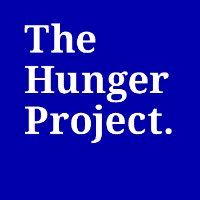You will tell your grandchildren (or somebody’s grandchildren) about 2015.
The world community described 2015 as a “pivotal” year even as early as 2012. It marked the completion of the Millennium Development Goals (MDGs), and the launch of new Sustainable Development Goals (SDGs) – an “Agenda to Transform Our World.”
As a professional-but-inwardly-skeptical optimist, I was frankly astonished at how well 2015 turned out. While the news media focused on horrific acts of brutality and its political fallout, here is my perspective of the top milestones of 2015 from the perspective of ending hunger and poverty. (Also please see the accompanying Top 10 Opportunities of 2016).
- SDGs: Following the world’s largest-ever participatory policy-making process, the nations of the world agreed to a framework of goals to “finish the job” by 2030 that was started with the Year 2000 “Millennium Declaration.” In addition, the package of 17 SDGs addresses previously taboo subjects, such as peace-building, inclusive economic growth and participatory governance, while setting much stronger goals on gender and the environment.
- FFD3 – Paying for the SDGs: With the MDGs, it took years for the world to even meet about financing it. This time, the Financing for Development Conference (FfD3) was held months before the SDGs were signed.
- COP21 – Climate Change Agreement: The third miraculous agreement was the agreement in Paris to seriously address climate change, holding temperature rises to “well below two degrees Celsius” and a framework to pursue efforts to limit it to 1.5 degrees.
- Pope Francis Weighs In: Pope Francis has “helped restore the Vatican’s role in global diplomacy,” particularly on poverty and climate change. At the SDG Summit, he state: “To enable these real men and women to escape from extreme poverty, we must allow them to be dignified agents of their own destiny. Integral human development and the full exercise of human dignity cannot be imposed. They must be built up and allowed to unfold…”
- Community-led Development: The Hunger Project discovered we are not as alone as we feared in empowering people to take charge of their own development. At the poverty and hunger session of the SDG Summit, Hunger Project president Åsa Skogström Feldt announced the creation of a new Movement for Community-led Development with 20 leading international organizations. The SDGs, FFD3 and COP21 all explicitly commit to supporting community-level action. Reforms at the World Bank established a Global Practice on Community-Driven Development.
- Victory over Ebola: Courageous individuals, communities, governments and their international partners contained and ended one of the deadliest disease outbreaks since HIV/AIDS, underlying the critical need to invest in strengthening health systems in countries that can quickly detect and deal with outbreaks anywhere.
- The 2025 Vision: If hunger and poverty are to be ended by 2030, the African Union and groups such as IFPRI with its Compact 2025 have concluded that hunger can be ended first – by 2025. In 2015, the African Union adopted its implementation strategy and roadmap to make this happen.
- Mind, Society and Behavior. The World Bank’s flagship 2015 World Development Report
reports on advances in cognitive science support a long-held principle of The Hunger Project, stating “the ways societies shape mindsets can be sources of development disadvantage but also can be changed.” - Glimmers of Diplomatic Hope. In a political environment dominated by military force, this year featured striking diplomatic breakthroughs between the US and Cuba, a peace agreement in Colombia, the world community and Iran’s nuclear program, and even in the possibility of diplomatic progress in the Syrian civil war that has triggered the world’s most horrific humanitarian crisis.
- Bridging Humanitarian Response and Development. One of the unexpected outcomes from the Movement for Community-led Development has been learning the extent to which this approach is equally valid in both stable and fragile states, in emergencies and in the long-term work of poverty reduction. Given that the majority of extreme poverty is projected to be in fragile states by 2018, unifying these efforts will be key to achieving the 2030 agenda.
